-
 Bitcoin
Bitcoin $119800
1.38% -
 Ethereum
Ethereum $3873
3.25% -
 XRP
XRP $3.247
1.85% -
 Tether USDt
Tether USDt $1.001
0.02% -
 BNB
BNB $840.4
5.94% -
 Solana
Solana $190.0
2.55% -
 USDC
USDC $1.000
0.03% -
 Dogecoin
Dogecoin $0.2433
2.69% -
 TRON
TRON $0.3197
-0.05% -
 Cardano
Cardano $0.8367
1.39% -
 Sui
Sui $4.327
3.11% -
 Hyperliquid
Hyperliquid $44.00
0.31% -
 Stellar
Stellar $0.4461
1.76% -
 Chainlink
Chainlink $19.25
4.61% -
 Hedera
Hedera $0.2941
3.90% -
 Bitcoin Cash
Bitcoin Cash $598.4
6.89% -
 Avalanche
Avalanche $26.19
4.67% -
 Litecoin
Litecoin $115.1
0.50% -
 Shiba Inu
Shiba Inu $0.00001427
1.55% -
 Toncoin
Toncoin $3.379
2.01% -
 UNUS SED LEO
UNUS SED LEO $8.966
-0.16% -
 Ethena USDe
Ethena USDe $1.001
0.02% -
 Uniswap
Uniswap $11.04
4.16% -
 Polkadot
Polkadot $4.239
2.00% -
 Monero
Monero $324.6
0.36% -
 Bitget Token
Bitget Token $4.672
2.46% -
 Pepe
Pepe $0.00001294
2.69% -
 Dai
Dai $0.0000
0.01% -
 Cronos
Cronos $0.1443
2.71% -
 Aave
Aave $302.9
1.98%
Is USDT suitable for long-term holding?
USDT's long-term viability is questionable due to regulatory uncertainty, transparency concerns regarding its reserves, and the opportunity cost of forgoing potentially higher returns from other assets; counterparty risk further adds to the investment's inherent volatility.
Feb 27, 2025 at 09:00 pm
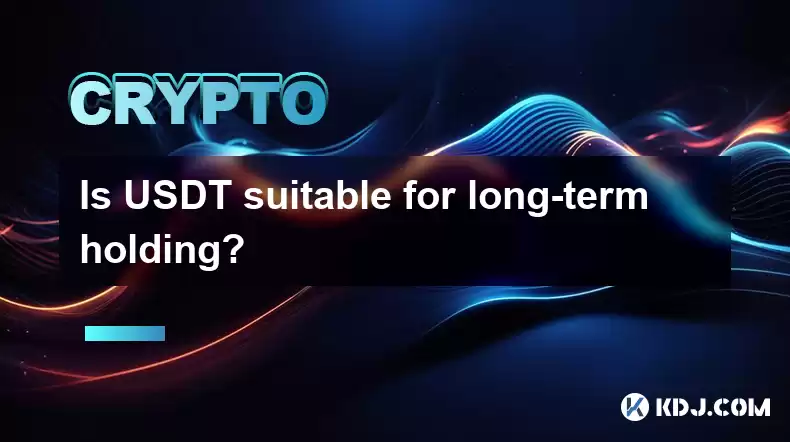
Is USDT Suitable for Long-Term Holding?
Key Points:
- USDT's Nature: USDT, a Tether, is a stablecoin pegged to the US dollar. Unlike volatile cryptocurrencies like Bitcoin or Ethereum, its primary goal is price stability. This inherent characteristic significantly impacts its suitability for long-term holding.
- Regulatory Uncertainty: The regulatory landscape surrounding stablecoins remains unclear and constantly evolving. This uncertainty poses a risk to long-term USDT holders, as changes in regulations could impact the stability of the peg or even lead to legal challenges.
- Auditing and Transparency Concerns: The transparency surrounding Tether's reserves has been a recurring point of contention. While Tether has provided some audits, concerns persist about the complete backing of USDT with US dollars and other equivalent assets. This lack of complete transparency increases the risk for long-term investors.
- Opportunity Cost: Holding USDT for the long term implies foregoing potential gains from investing in other, potentially more lucrative, cryptocurrencies or traditional assets. The small returns offered by USDT must be weighed against the risks and potential returns elsewhere.
- Counterparty Risk: As a centralized stablecoin, USDT carries counterparty risk. This means that the solvency and trustworthiness of Tether itself are crucial factors impacting the value of USDT. Any financial difficulties experienced by Tether could directly affect the stability of the coin.
Understanding the Implications of Long-Term USDT Holding:
- The Stability Illusion:
USDT's primary appeal lies in its supposed stability. It aims to maintain a 1:1 peg with the US dollar, offering a safe haven for investors navigating the volatile cryptocurrency market. This perceived stability makes it attractive for short-term hedging or as a temporary storage of funds within the crypto ecosystem. However, the long-term implications of relying on this stability need careful consideration. While it might seem like a low-risk strategy, the absence of substantial returns over an extended period needs to be weighed against the potential for unforeseen events. The very nature of a stablecoin designed to avoid significant price fluctuations directly impacts its potential for long-term appreciation. While it might protect against losses during market downturns, it simultaneously limits the opportunity for significant gains during bull markets. The illusion of stability, therefore, needs to be critically examined in the context of long-term investment goals. One must consider if the minimal risk aversion justifies forgoing the potentially higher returns associated with more volatile cryptocurrencies or traditional investment options. The stability also doesn't inherently eliminate the risks associated with the regulatory environment or the solvency of the issuer, which are crucial factors for long-term investors.
- Regulatory Scrutiny and its Impact:
The regulatory landscape for stablecoins is still in its nascent stages. Governments worldwide are grappling with the implications of these digital assets, and the regulatory framework surrounding them is constantly evolving. This uncertainty presents a significant risk to long-term USDT holders. Changes in regulations could lead to restrictions on the use of USDT, limitations on its operations, or even outright bans in certain jurisdictions. Such regulatory actions could severely impact the value and liquidity of USDT, jeopardizing the investment of long-term holders. The lack of a clear, globally harmonized regulatory framework creates uncertainty, making long-term planning challenging. Investors need to carefully monitor regulatory developments and understand the potential consequences of changes in the legal environment. This requires not only staying informed about global regulatory trends but also considering the potential impact on the accessibility and usability of USDT in different regions. The lack of clarity and the constantly shifting regulatory landscape add an extra layer of risk to the long-term outlook of USDT, making it a less predictable asset for long-term investment strategies.
- Transparency and Auditing Concerns:
Concerns surrounding the transparency and auditing of Tether's reserves have consistently plagued the stablecoin. While Tether has published audits from various firms, the completeness and thoroughness of these audits have been questioned by many. The lack of full transparency about the composition of Tether's reserves raises concerns about whether the 1:1 peg is consistently maintained. This lack of complete transparency directly impacts the confidence of investors. For long-term holders, the uncertainty surrounding the actual backing of USDT creates a significant risk. A lack of trust in the issuer’s transparency can erode confidence, potentially leading to a run on the stablecoin, particularly during times of market stress. Investors planning for the long term need to critically evaluate the available information, weigh the risks associated with the potential for misrepresentation or manipulation, and assess their own comfort level with the level of transparency provided by Tether. The absence of complete transparency significantly increases the risk profile of USDT for long-term investment.
- Opportunity Cost and Alternative Investments:
Holding USDT for the long term implies foregoing potential gains from investing in other assets. While USDT aims for stability, it typically offers very low or negligible returns. This means that the potential gains from investing in other cryptocurrencies with higher growth potential or traditional assets like stocks or bonds are missed. The opportunity cost of holding USDT needs careful consideration. Investors need to weigh the perceived safety and stability of USDT against the potential for higher returns from alternative investments, considering their risk tolerance and investment timeline. The decision to hold USDT long-term must be made after a thorough assessment of the opportunity cost and a comparison with the potential returns of other asset classes. The low return potential of USDT, in the face of the risks it carries, necessitates a careful consideration of alternative investment options. It’s important to consider the long-term financial goals and evaluate if the low returns of USDT align with these goals.
- Counterparty Risk and the Stability of Tether:
USDT, being a centralized stablecoin, is subject to counterparty risk. This means that the financial health and stability of Tether, the issuer, directly impact the value of USDT. Any financial difficulties experienced by Tether, such as insolvency or legal challenges, could severely affect the stability of the peg and potentially lead to a loss of value for USDT holders. For long-term investors, this counterparty risk is a significant concern. The reliance on a single entity to maintain the peg introduces a level of vulnerability not present in decentralized stablecoins. The long-term viability of USDT is intrinsically linked to the stability and reputation of Tether. Investors need to assess the financial health of Tether, consider the potential risks associated with its operations, and carefully evaluate whether the risk profile aligns with their long-term investment strategy. The centralized nature of USDT and the resulting counterparty risk significantly increase the uncertainty associated with long-term holding.
FAQs:
Q: Is USDT backed 1:1 by the US dollar?
A: Tether claims a 1:1 backing of USDT by US dollars and other equivalent assets. However, the complete transparency of these reserves has been questioned, raising concerns about the actual backing and the accuracy of the claim. Independent audits have been conducted, but their scope and conclusiveness remain subjects of debate within the cryptocurrency community.
Q: What are the risks of holding USDT long-term?
A: Long-term holding of USDT carries several risks, including regulatory uncertainty, lack of transparency regarding reserve composition, opportunity cost from missing out on potential gains in other assets, and counterparty risk associated with Tether's financial stability.
Q: Are there any alternatives to USDT for long-term stablecoin holding?
A: Yes, other stablecoins exist, each with its own set of advantages and disadvantages. Some are decentralized, aiming to mitigate counterparty risk, while others might be backed by different assets. Researching and comparing different stablecoins is crucial before making a long-term investment decision. However, it is important to note that all stablecoins carry inherent risks, and no stablecoin is entirely risk-free.
Q: What is the potential return on investment for long-term USDT holding?
A: The potential return on investment for long-term USDT holding is generally very low, often near zero. The primary appeal is stability, not significant returns. This needs to be weighed against the potential returns and risks of other investment options.
Q: How does regulatory uncertainty affect my long-term USDT investment?
A: Regulatory uncertainty can significantly impact your long-term USDT investment. Changes in regulations could affect the legality and usability of USDT in your region, potentially reducing its value or making it difficult to trade or use. Staying informed about regulatory developments is crucial for mitigating this risk.
Disclaimer:info@kdj.com
The information provided is not trading advice. kdj.com does not assume any responsibility for any investments made based on the information provided in this article. Cryptocurrencies are highly volatile and it is highly recommended that you invest with caution after thorough research!
If you believe that the content used on this website infringes your copyright, please contact us immediately (info@kdj.com) and we will delete it promptly.
- Tether Gold's Meteoric Rise: Market Cap and Soaring Gold Demand
- 2025-07-28 10:30:11
- Reddit, Crypto, and Altcoins: Navigating the Hype in 2025
- 2025-07-28 10:30:11
- Bitcoin, Altcoin, Volume Surge: Decoding the Crypto Market's Latest Moves
- 2025-07-28 10:50:20
- Bitcoin, Altcoins, and 2024 Targets: A NYC Perspective
- 2025-07-28 10:50:21
- Moo Deng Meme-Coin Mania: ROI or Just Hype?
- 2025-07-28 10:55:13
- Ethereum, Injective, and Tokenized Stock: A New Era in DeFi?
- 2025-07-28 11:10:12
Related knowledge
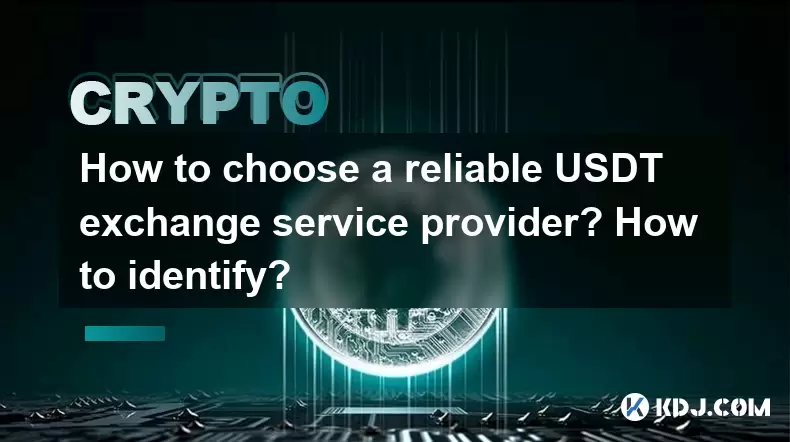
How to choose a reliable USDT exchange service provider? How to identify?
Jun 12,2025 at 03:15pm
Understanding the Role of USDT in Cryptocurrency TradingUSDT (Tether) is one of the most widely used stablecoins in the cryptocurrency market. It is d...
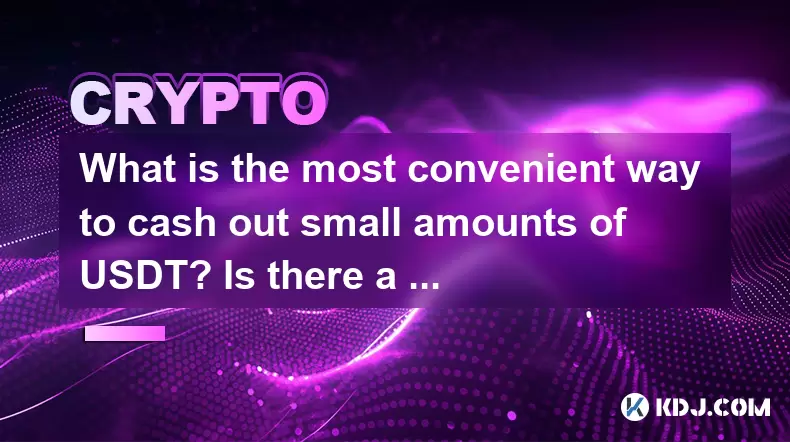
What is the most convenient way to cash out small amounts of USDT? Is there a shortcut?
Jun 11,2025 at 11:00pm
Understanding the Need to Cash Out Small USDT AmountsCashing out small amounts of USDT can be a challenge for many crypto users. Traditional methods o...
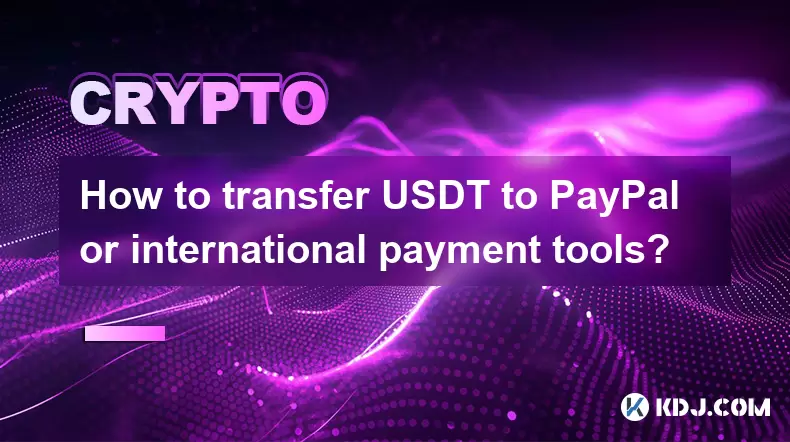
How to transfer USDT to PayPal or international payment tools?
Jun 15,2025 at 05:28am
Understanding the Basics of USDT and PayPal IntegrationUSDT (Tether) is a stablecoin pegged to the US dollar, offering blockchain-based value transfer...
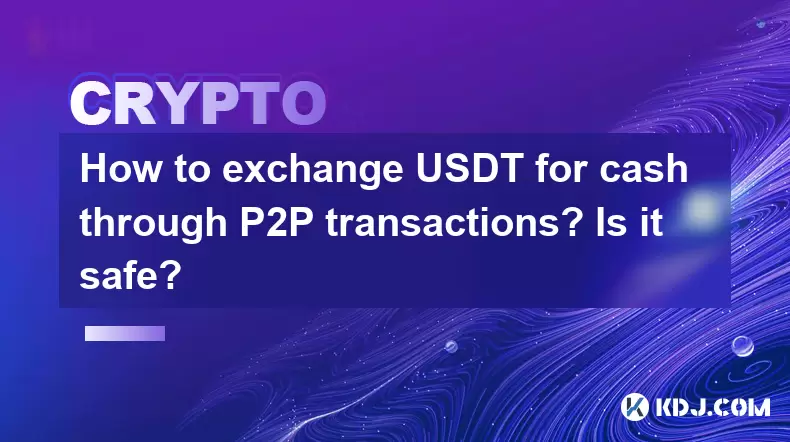
How to exchange USDT for cash through P2P transactions? Is it safe?
Jun 18,2025 at 07:56am
Understanding USDT and P2P TransactionsTether (USDT) is a stablecoin pegged to the value of the US dollar, making it a popular choice for users who wa...
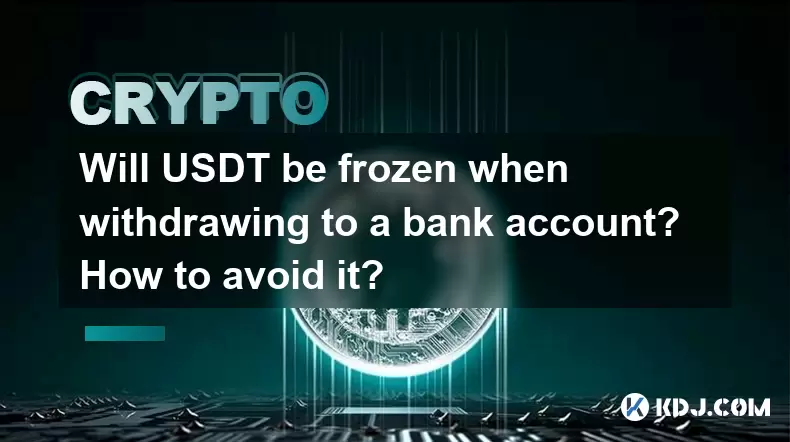
Will USDT be frozen when withdrawing to a bank account? How to avoid it?
Jun 15,2025 at 10:03am
Understanding USDT Withdrawals and Bank Account Freezing RisksWhen users decide to withdraw USDT (Tether) to a bank account, one of the most common co...
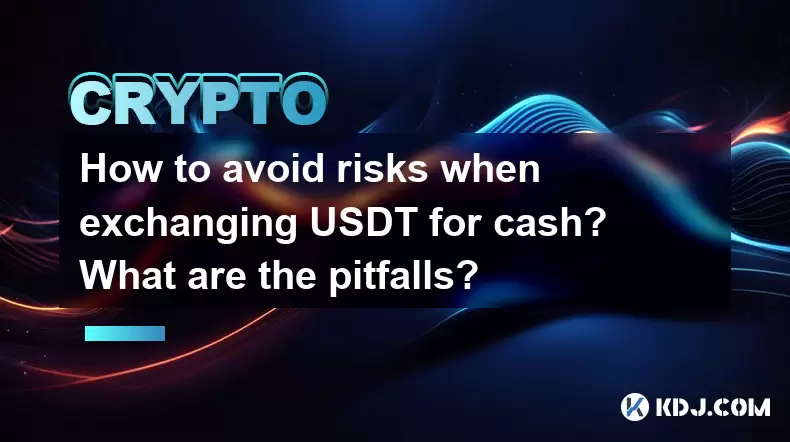
How to avoid risks when exchanging USDT for cash? What are the pitfalls?
Jun 11,2025 at 08:14pm
Understanding the Risks of Exchanging USDT for CashWhen exchanging USDT (Tether) for cash, users must be aware of the potential risks involved. As a s...

How to choose a reliable USDT exchange service provider? How to identify?
Jun 12,2025 at 03:15pm
Understanding the Role of USDT in Cryptocurrency TradingUSDT (Tether) is one of the most widely used stablecoins in the cryptocurrency market. It is d...

What is the most convenient way to cash out small amounts of USDT? Is there a shortcut?
Jun 11,2025 at 11:00pm
Understanding the Need to Cash Out Small USDT AmountsCashing out small amounts of USDT can be a challenge for many crypto users. Traditional methods o...

How to transfer USDT to PayPal or international payment tools?
Jun 15,2025 at 05:28am
Understanding the Basics of USDT and PayPal IntegrationUSDT (Tether) is a stablecoin pegged to the US dollar, offering blockchain-based value transfer...

How to exchange USDT for cash through P2P transactions? Is it safe?
Jun 18,2025 at 07:56am
Understanding USDT and P2P TransactionsTether (USDT) is a stablecoin pegged to the value of the US dollar, making it a popular choice for users who wa...

Will USDT be frozen when withdrawing to a bank account? How to avoid it?
Jun 15,2025 at 10:03am
Understanding USDT Withdrawals and Bank Account Freezing RisksWhen users decide to withdraw USDT (Tether) to a bank account, one of the most common co...

How to avoid risks when exchanging USDT for cash? What are the pitfalls?
Jun 11,2025 at 08:14pm
Understanding the Risks of Exchanging USDT for CashWhen exchanging USDT (Tether) for cash, users must be aware of the potential risks involved. As a s...
See all articles

























































































